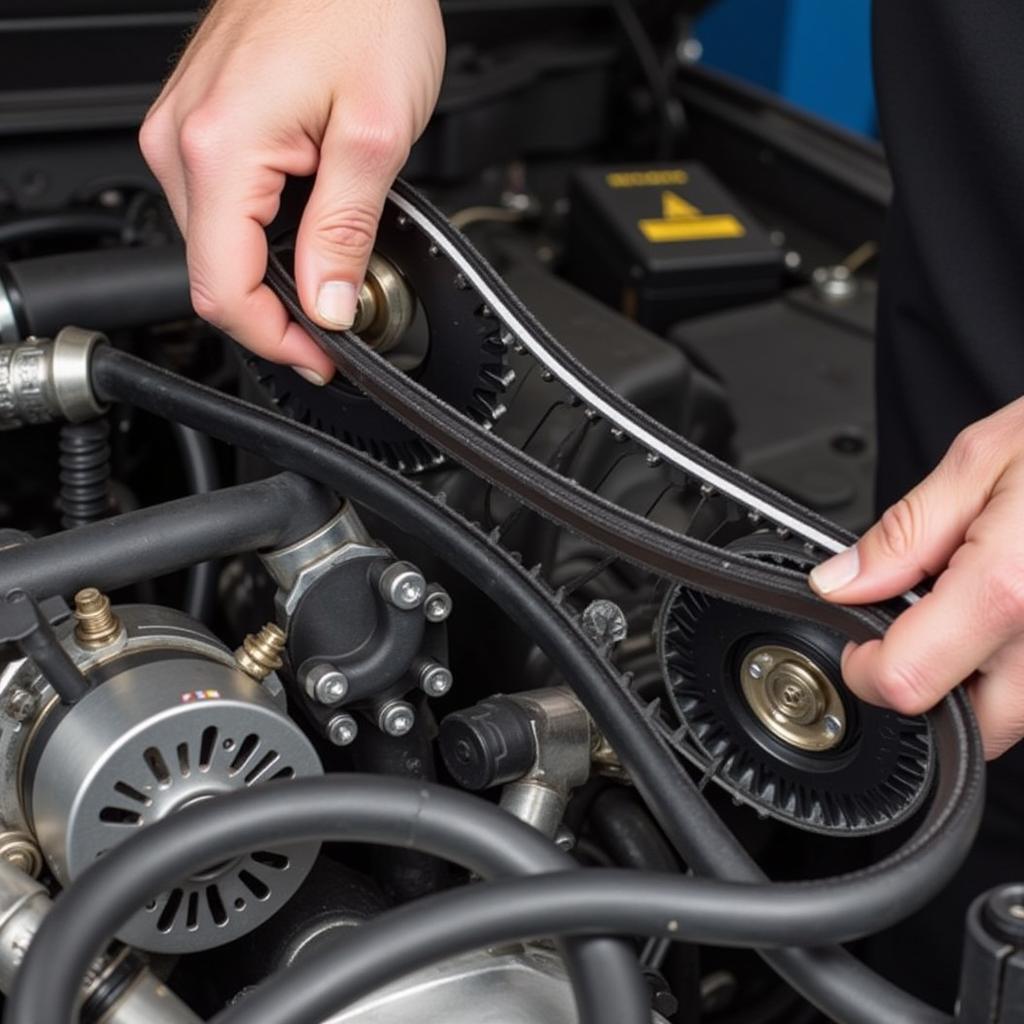What Services Are Needed for a Car in the USA at 90,000 Miles?
Reaching the 90,000-mile mark on your car’s odometer is a significant milestone. It signifies that your vehicle has served you well, but it also means it’s time to pay extra attention to its maintenance needs. Understanding what services are needed for a car in the USA at 90,000 miles is crucial for its longevity, performance, and safety. This guide will provide you with a comprehensive overview of the essential services required at this mileage, helping you keep your car running smoothly for years to come.
Essential Car Services at 90,000 Miles
At 90,000 miles, your car needs more than just an oil change. Several crucial components require inspection and potential service to ensure optimal performance and safety. Here’s a detailed breakdown of the necessary services for a car with 90,000 miles in the USA.
-
Timing Belt Replacement: One of the most critical services at this mileage is often the timing belt replacement. If your car has a timing belt (not a timing chain), consult your owner’s manual for the recommended replacement interval. A broken timing belt can lead to catastrophic engine damage, so it’s crucial to replace it proactively.
-
Spark Plug Replacement: Spark plugs are essential for igniting the air-fuel mixture in your engine. Worn-out spark plugs can reduce fuel efficiency, decrease engine power, and cause difficulty starting. Replacing them at 90,000 miles is a good preventative measure.
-
Transmission Service: Whether you have an automatic or manual transmission, servicing it at 90,000 miles is essential. This usually involves changing the transmission fluid and filter, which helps maintain smooth shifting and prevents premature wear.
-
Cooling System Flush: The cooling system keeps your engine from overheating. At 90,000 miles, flushing the system and replacing the coolant helps remove any buildup and ensures optimal cooling efficiency.
-
Brake Inspection: Thoroughly inspect your brakes, including brake pads, rotors, and brake lines, for wear and tear. Replacing worn brake components is crucial for safety.
 Timing Belt Replacement at 90,000 Miles
Timing Belt Replacement at 90,000 Miles
Addressing Common Issues at 90,000 Miles
Beyond the standard services, certain issues are more likely to arise around the 90,000-mile mark. Being aware of these potential problems can help you address them proactively.
-
Suspension Components: Worn shocks, struts, and other suspension components can affect ride comfort and handling. Have your mechanic inspect these parts and replace them if necessary.
-
Fuel System Cleaning: A fuel system cleaning can help remove deposits that can hinder engine performance and fuel efficiency.
-
Battery Check: While car batteries can last several years, checking their health at 90,000 miles is recommended. A weak battery can lead to starting problems and other electrical issues.
Maintaining Your Car Beyond 90,000 Miles
Reaching 90,000 miles is just another chapter in your car’s life. By continuing regular maintenance, you can ensure many more miles of reliable service.
-
Regular Oil Changes: Stick to the recommended oil change intervals in your owner’s manual. Regular oil changes are vital for engine health and longevity.
-
Tire Rotations and Balancing: Rotating and balancing your tires regularly ensures even wear and improves handling.
-
Air Filter Replacement: A clean air filter allows for proper airflow to the engine, optimizing performance and fuel efficiency.
-
Fluid Top-offs: Regularly check and top off essential fluids like power steering fluid, brake fluid, and windshield washer fluid.
Conclusion
Understanding what services are needed for a car in the USA at 90,000 miles is vital for maintaining its performance, reliability, and safety. By following this guide and consulting with a qualified mechanic, you can ensure your car continues to serve you well for many more miles. Remember, proactive maintenance is always better than reactive repairs.
FAQ
- What is the most important service at 90,000 miles? Often, it’s the timing belt replacement (if applicable).
- How often should I change my oil? Refer to your owner’s manual for the recommended interval.
- Why is transmission service important? It helps maintain smooth shifting and prevents wear.
- How can I improve my car’s fuel efficiency? Regular maintenance, including spark plug replacement and air filter changes, can help.
- What should I do if I hear unusual noises from my car? Consult a qualified mechanic for diagnosis and repair.
- Is it expensive to maintain a car at 90,000 miles? The cost varies depending on the services needed.
- How can I find a reliable mechanic? Ask for recommendations from friends or family, or check online reviews.
Common Car Service Scenarios at 90,000 miles
- Scenario 1: Car struggles to start, especially in cold weather. This could indicate a weak battery or worn-out spark plugs.
- Scenario 2: Rough shifting or slipping gears. This suggests a potential transmission issue.
- Scenario 3: Squealing or grinding brakes. This indicates worn brake pads or rotors.
- Scenario 4: Overheating engine. This could be a problem with the cooling system.
Further Reading and Related Topics
- Car Maintenance Schedule
- Understanding Your Car’s Warning Lights
- Tips for Extending the Life of Your Car
Need help? Contact us via WhatsApp: +1(641)206-8880, Email: [email protected]. We have a 24/7 customer support team.
